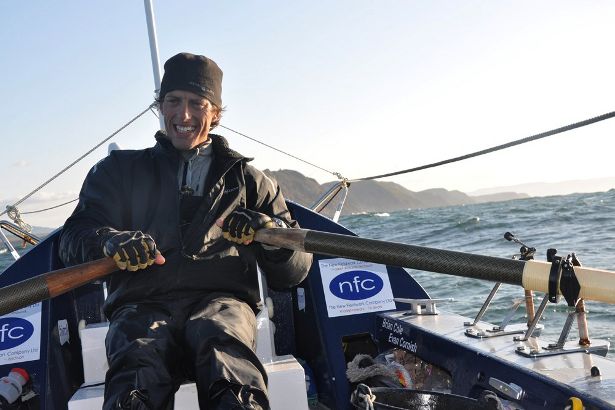
Whenever I told people that a recent client of mine, Sarah Outen, had rowed a boat from Australia to Mauritius, the most common source of beffudlement was where you sleep on an ocean rowing boat. This was usually followed by some curiosity about how such a tiny boat would survive out at sea.
Below are some answers to those questions.
[divide]
[box type=”note” bg=”#ebebeb” color=”#111″ font=”arial” fontsize=”13″ border=”#a6a6a6″ head=”How To Row An Ocean” headbg=”#21417b” headcolor=”#fff”]
This is an edited excerpt from the How To Row An Ocean chapter of my new book: How To Get To The North Pole And Other Iconic Adventures.
[button color=”green” link=”http://thenextchallenge.org/books” size=”big” font=”arial” fontw=”bold” textcolor=”#fff” texthcolor=”#d00000″ align=”center” radius=”8″]Order Now[/button]
[/box]
[divide]
Where do you sleep on an ocean rowing boat?
Ocean rowing boats have cabins where you can sleep, sealed shut from the elements, usually at the back of the boat. This is where you will hide in bad weather and get whatever down time there is to be had. They are not spacious and can be tough in choppy seas but as with all of these things, you should hopefully adapt.
Shift patterns are normal at sea for groups. As such, sleep tends to be in short bursts of a few hours at a time. Solo or on a less arduous itinerary, there may be times when you follow a more normal sleep/wake routine, rowing during the day and sleeping at night. Other times, this may be far from the case. You may need to row for long, unearthly hours, or simply not be able to sleep through the fear and discomfort of an angry sea tossing you about.
How does a tiny boat survive in a big ocean?
Like any sea-worthy vessel, ocean rowing boats are designed to stay upright as much as possible but also to quickly self-right should they get flipped.
Some features of modern ocean rowing boats that help achieve this include:
- Low centre of gravity due to a heavy ballast at the bottom of the boat. Usually a large volume of fresh water.
- Completely sealed deck and cabins to avoid swamping or water getting inside the holds.
- Maintaining buoyancy, in part through the large air-filled cabins on top of the boat.
- The boats are made from many small compartments so a single hole won’t cause the whole thing to fill with water.
Photo courtesy of Chris Martin
[divide]
How to Get to the North Pole:
and Other Iconic Adventures
Newly published for April 2012
[button color=”green” link=”http://www.thenextchallenge.org/books/” size=”big” target=”_blank” font=”arial” fontw=”bold” textcolor=”#fff” align=”center” radius=”10″]Order Now[/button]


What do you think? Please do add your thoughts below…